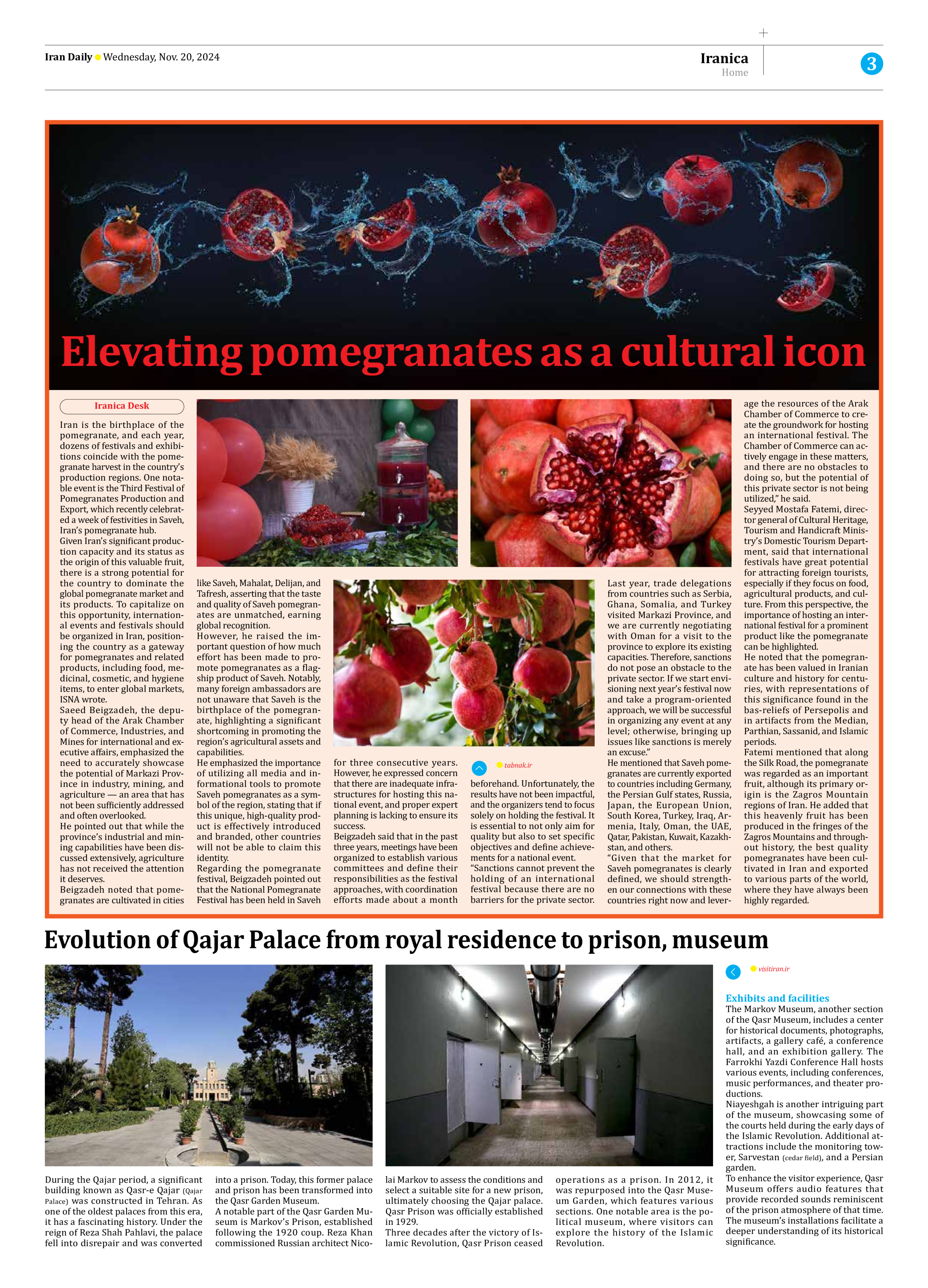
Evolution of Qajar Palace from royal residence to prison, museum
During the Qajar period, a significant building known as Qasr-e Qajar (Qajar Palace) was constructed in Tehran. As one of the oldest palaces from this era, it has a fascinating history. Under the reign of Reza Shah Pahlavi, the palace fell into disrepair and was converted into a prison. Today, this former palace and prison has been transformed into the Qasr Garden Museum.
A notable part of the Qasr Garden Museum is Markov’s Prison, established following the 1920 coup. Reza Khan commissioned Russian architect Nicolai Markov to assess the conditions and select a suitable site for a new prison, ultimately choosing the Qajar palace. Qasr Prison was officially established in 1929.
Three decades after the victory of Islamic Revolution, Qasr Prison ceased operations as a prison. In 2012, it was repurposed into the Qasr Museum Garden, which features various sections. One notable area is the political museum, where visitors can explore the history of the Islamic Revolution.
Exhibits and facilities
The Markov Museum, another section of the Qasr Museum, includes a center for historical documents, photographs, artifacts, a gallery café, a conference hall, and an exhibition gallery. The Farrokhi Yazdi Conference Hall hosts various events, including conferences, music performances, and theater productions.
Niayeshgah is another intriguing part of the museum, showcasing some of the courts held during the early days of the Islamic Revolution. Additional attractions include the monitoring tower, Sarvestan (cedar field), and a Persian garden.
To enhance the visitor experience, Qasr Museum offers audio features that provide recorded sounds reminiscent of the prison atmosphere of that time. The museum’s installations facilitate a deeper understanding of its historical significance.







